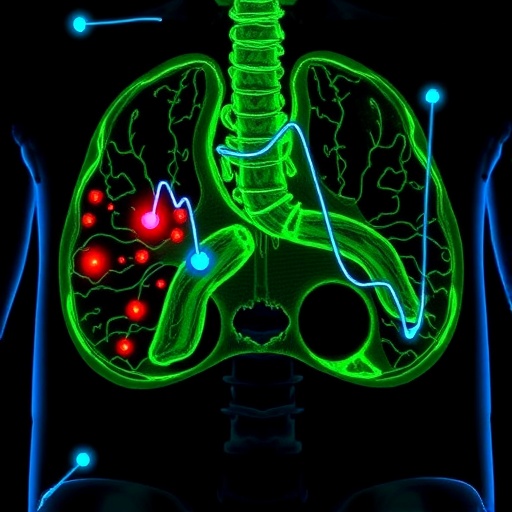Prostate cancer persists as a formidable global health adversary, ranking as the second most prevalent malignancy in men worldwide. While localized prostate cancer often responds well to initial treatment modalities, the disease’s advanced stages present significant clinical challenges. Among these, metastatic castration-resistant prostate cancer (mCRPC) represents a particularly lethal form characterized by therapy resistance and poor patient outcomes. Recent advances in molecular oncology have shed light on the critical role of SOX transcription factors, particularly SOX2, as pivotal modulators of tumor progression, plasticity, and therapeutic resistance in prostate cancer.
SOX2, a transcription factor traditionally known for its role in maintaining pluripotency during embryonic development, has increasingly been implicated in cancer biology. Its aberrant expression in prostate tumors is intricately linked to the maintenance and expansion of cancer stem and progenitor cell populations. These cell subsets are notoriously adept at evading conventional therapies, contributing to tumor recurrence and metastasis. Mechanistically, SOX2 fosters cell proliferation by promoting the expression of genes involved in cell cycle progression while simultaneously inhibiting apoptotic pathways, thus enabling malignant cells to survive hostile microenvironments and treatment challenges.
One of the most significant emerging insights into SOX2’s function in prostate cancer relates to its role in enabling epithelial-mesenchymal transition (EMT), a process that endows cancer cells with migratory and invasive capabilities essential for metastasis. EMT involves a dynamic phenotypic shift from an epithelial state to a more mesenchymal, motile form, facilitating dissemination from the primary tumor site. Elevated SOX2 expression correlates strongly with increased EMT marker expression, implicating this transcription factor as a core driver of metastatic potential. Clinically, high SOX2 levels are often associated with aggressive tumor phenotypes and poor prognosis, underscoring its value as a potential biomarker.
.adsslot_2Ng8P6ZJSL{ width:728px !important; height:90px !important; }
@media (max-width:1199px) { .adsslot_2Ng8P6ZJSL{ width:468px !important; height:60px !important; } }
@media (max-width:767px) { .adsslot_2Ng8P6ZJSL{ width:320px !important; height:50px !important; } }
ADVERTISEMENT
Beyond its influence on cell proliferation and EMT, SOX2 serves as a central orchestrator of tumor lineage plasticity in prostate cancer. This plasticity refers to the ability of cancer cells to shift phenotypes and adopt alternate lineage identities, allowing them to adapt to selective pressures such as androgen deprivation therapy (ADT). Notably, SOX2 has been shown to facilitate the transdifferentiation of prostate adenocarcinoma cells into neuroendocrine prostate cancer (NEPC), a highly aggressive and therapy-resistant variant characterized by distinct molecular and histological features. This lineage conversion poses considerable challenges to treatment, as NEPC exhibits relative insensitivity to conventional hormonal therapies.
The molecular governance of SOX2 is embedded within a multifaceted regulatory network encompassing transcriptional, post-transcriptional, and epigenetic mechanisms. Key upstream regulators include BRN2, TRIB2, and NRP2, transcription factors and signaling mediators that upregulate SOX2 expression in response to cellular stressors such as therapeutic insult. Downstream, SOX2 influences a broad array of effectors, including epigenetic modifiers like LSD1, non-coding RNAs such as H19, protease inhibitors like SPINK1, and proneural transcription factors such as ASCL1, each contributing to the malignant phenotype by reinforcing stem-like properties, enhancing invasiveness, and promoting resistance.
The signaling pathways intersecting with SOX2 activity represent another layer of complexity. SOX2 operates at the convergence of critical oncogenic cascades, including the PI3K/AKT axis, Hedgehog signaling, Wnt/β-catenin pathway, and TGF-β networks. These pathways collectively support the maintenance of cancer stem cell traits and facilitate adaptive responses that drive tumorigenesis and metastasis. Intervention strategies targeting these pathways have shown promise, but the redundancy and crosstalk within these networks pose significant hurdles to therapeutic efficacy.
Treatment resistance remains a central obstacle in managing advanced prostate cancer. SOX2 contributes critically to the resistance phenotype by enabling cancer cells to enter a reversible quiescent state, evading cytotoxic chemotherapy that preferentially targets actively dividing cells. Moreover, SOX2 modulates cell cycle regulators and affects glucocorticoid receptor expression, which in turn mediates resistance to nuclear hormone receptor signaling inhibitors such as enzalutamide and abiraterone. This dual capacity to support quiescence and hormone resistance underpins SOX2’s role in promoting disease persistence under therapeutic pressure.
Given its multifaceted involvement in prostate cancer pathophysiology, SOX2 emerges as a promising therapeutic target. However, direct inhibition of transcription factors like SOX2 poses inherent challenges due to their intracellular localization and lack of enzymatic activity amenable to classical small-molecule inhibition. Consequently, research efforts have turned toward disrupting protein-protein interactions involving SOX2, modulating upstream regulators to suppress its expression, or targeting downstream effectors to hinder its oncogenic functions. Advances in drug delivery systems and molecular biology tools offer hope for overcoming these barriers.
Balancing therapeutic efficacy against potential adverse effects is paramount, given SOX2’s physiological role in normal tissue homeostasis and regeneration. Strategies must therefore achieve selective targeting of SOX2-related pathways in tumor contexts without compromising stem cell populations essential for normal organ function. Precision medicine approaches, leveraging tumor-specific molecular signatures and combination therapies, could optimize therapeutic windows and minimize collateral toxicity.
The dynamic interplay between SOX2-driven plasticity, epigenetic modifications, and the tumor microenvironment is an active area of investigation. Understanding how SOX2 modulates tumor-stroma interactions, immune evasion mechanisms, and metabolic adaptations could unveil novel vulnerabilities exploitable by next-generation therapies. Integration of multi-omics data and sophisticated model systems, such as patient-derived xenografts and organoids, are critical for disentangling these complex networks.
Importantly, the identification of SOX2 as a biomarker holds significant translational potential. Measurement of SOX2 expression levels in biopsies or circulating tumor cells could inform prognostic assessments, stratify patients for tailored therapies, and monitor treatment responses. In conjunction with other molecular indicators, SOX2-based diagnostics may guide clinical decision-making and accelerate the development of personalized medicine frameworks in prostate cancer.
Looking forward, the ongoing elucidation of SOX2’s role in prostate cancer represents a paradigm shift in understanding tumor evolution and resistance mechanisms. The integration of basic mechanistic studies with clinical research holds promise for converting these insights into tangible therapeutic advances. Ultimately, targeting SOX2 and its associated networks could revolutionize the treatment landscape for patients confronting the most aggressive and intractable forms of prostate cancer, delivering improved survival and quality of life.
Subject of Research: The role of SOX transcription factors, focusing on SOX2, in prostate cancer progression and therapy resistance
Article Title: The role of SOX transcription factors in prostate cancer: Focusing on SOX2
News Publication Date: Not specified
References: Guotu Du, Xiang Huang, Peng Su, Ying Yang, Shicheng Chen, Tianyu Huang, Neng Zhang, The role of SOX transcription factors in prostate cancer: Focusing on SOX2, Genes & Diseases, Volume 12, Issue 6, 2025, 101692
Image Credits: Genes & Diseases
Keywords: Cancer genetics, prostate cancer, SOX2, lineage plasticity, metastatic castration-resistant prostate cancer, neuroendocrine prostate cancer, tumor progression, treatment resistance
Tags: cancer cell survival mechanismscancer stem cells and progenitor cellsepithelial-mesenchymal transition in tumorsimplications of SOX2 expression in prostate tumorsmetastatic castration-resistant prostate cancermolecular oncology advancesprostate cancer treatment challengesrole of transcription factors in cancerSOX2 and tumor microenvironmentSOX2 in prostate cancertherapy resistance in cancertumor progression mechanisms





